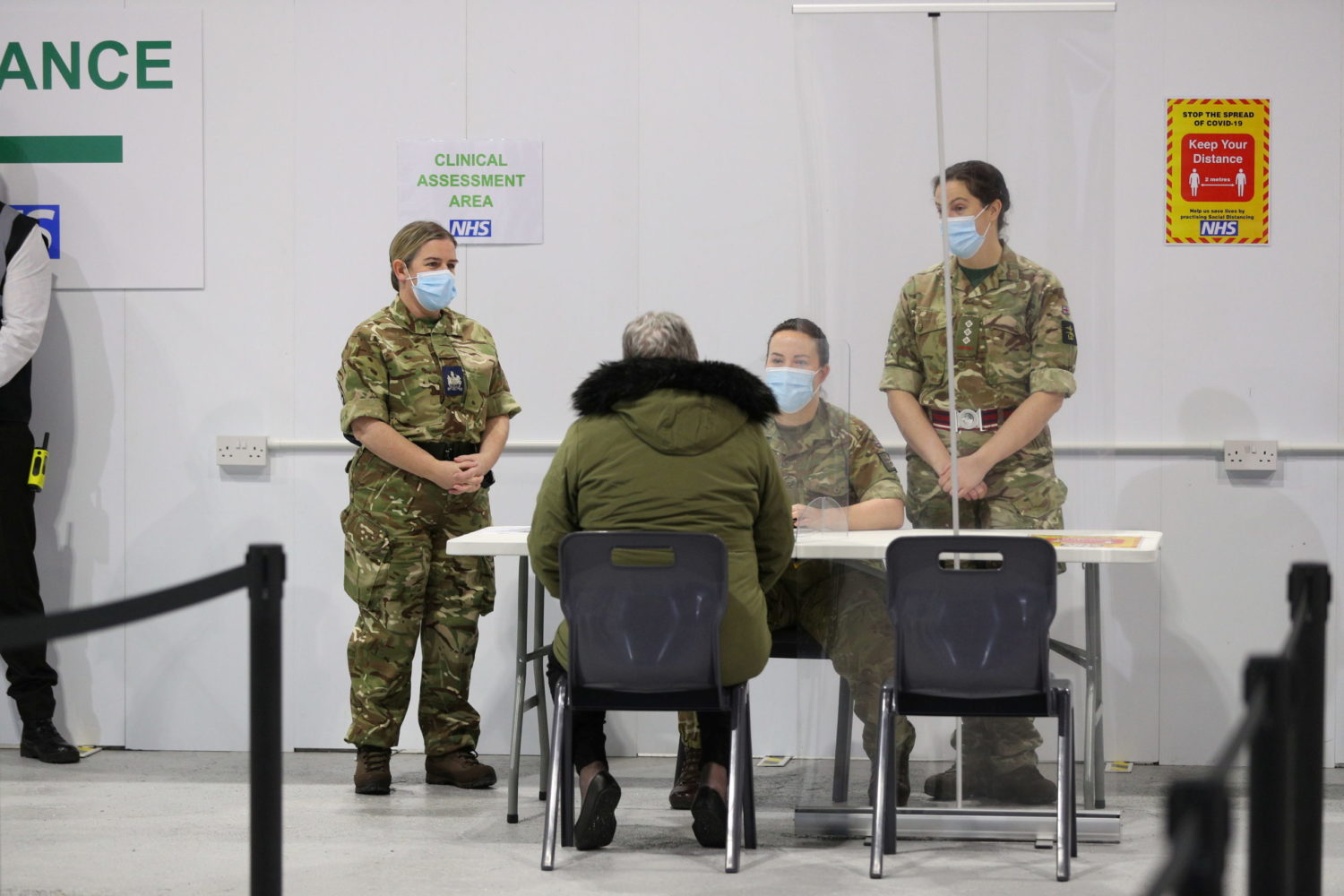
By Guy Faulconbridge and Kate Holton
LONDON (Reuters) – Western governments rushed to offer support for the AstraZeneca COVID-19 vaccination after South Africa halted its roll-out when research showed it offered minimal protection against mild infection from a variant spreading there.
The arrival of vaccines has given hope that scientists can tame a pandemic that has killed 2.3 million people worldwide. But if vaccines are less effective against new variants, they may need to be tweaked and people may need booster shots.
South Africa announced its pause after researchers from the University of Witwatersrand and the University of Oxford found that the AstraZeneca vaccine provided only minimal protection against mild or moderate infection from the B.1.351 variant, now the dominant form of the virus in that country.
The research is not yet peer reviewed and did not provide data on older people most likely to die or need hospitalization. There was no data on whether the vaccine would prevent severe illness, and researchers said that was still possible.
“This study confirms that the pandemic coronavirus will find ways to continue to spread in vaccinated populations, as expected,” said Andrew Pollard, chief investigator on the Oxford vaccine trial.
“But, taken with the promising results from other studies in South Africa using a similar viral vector, vaccines may continue to ease the toll on health care systems by preventing severe disease.”
SERIOUS INFECTIONS
French Health Minister Olivier Veran voiced support for the AstraZeneca vaccine, arguing it provided sufficient protection against “nearly all the variants” of the virus.
German Health Minister Jens Spahn said current evidence suggests all three vaccines approved in Europe – which include AstraZeneca – provided effective protection against serious infections.
Britain and Australia urged calm, citing evidence that the vaccines prevented grave illness and death, while AstraZeneca said it believed its vaccine could protect against severe disease.
“We think that both the vaccines that we’re currently using are effective in, as I say, in stopping serious disease and death,” British Prime Minister Boris Johnson told reporters. Britain also uses the Pfizer shot.
“We also think in particular in the case of the Oxford AstraZeneca vaccine that there’s good evidence that it is stopping transmission, as well, I think 67% reduction in transmission.”
Australia is expected approve the use of the AstraZeneca vaccine within days and expressed confidence in it.
“There is currently no evidence to indicate a reduction in the effectiveness of either the AstraZeneca or Pfizer vaccines in preventing severe disease and death. That is the fundamental task, to protect the health,” Health Minister Greg Hunt said.
But if vaccines do not work as effectively as hoped against new and emerging variants, then the world could be facing a much longer – and more expensive – battle against the virus than previously thought.
The AstraZeneca vaccine was the big hope for Africa as it is cheap and easy to store and transport. South Africa, which had hoped to roll out the AstraZeneca shot this month, is storing around 1 million doses it has received from the Serum Institute of India.
The B.1.351 variant dominant in South Africa, also known as 20I/501Y.V2, is also circulating in at least 40 other countries, including the United States. Other major variants include one first found in Britain, known as 20I/501Y.V1, and one found in Brazil known as P.1.
Austria warned against non-essential travel to its Alpine province of Tyrol because of an outbreak of the South African variant there. Cases were also detected north of Paris, forcing one school to close.
VACCINE SHOCK
An analysis of infections by the South African variant showed there was only a 22% lower risk of developing mild-to-moderate COVID-19, more than 14 days after being vaccinated with the AstraZeneca shot, versus those given a placebo.
Protection against moderate-severe disease, hospitalization or death could not be assessed in the study of around 2,000 volunteers who had a median age of 31, as the target population were at such low risk.
Professor Shabir Madhi, lead investigator on the AstraZeneca trial in South Africa, said the vaccine’s similarity to another produced by Johnson & Johnson, which reduced severe disease by 85%, suggested it would still prevent serious illness or death.
“There’s still some hope that the AstraZeneca vaccine might well perform as well as the Johnson & Johnson vaccine in a different age group demographic that I address of severe disease,” he told BBC radio.
Sarah Gilbert, professor of vaccinology at the University of Oxford, said efforts were under way to develop a new generation of booster shot vaccines that will allow protection against emerging variants.
“This is the same issue that is faced by all of the vaccine developers, and we will continue to monitor the emergence of new variants that arise in readiness for a future strain change.”
(Reporting by Guy Faulconbridge and Kate Holton; editing by Michael Holden, Angus MacSwan, Nick Macfie and Giles Elgood)












